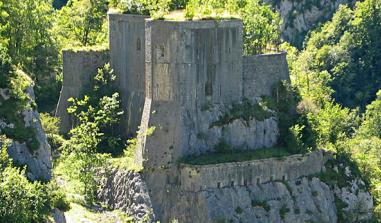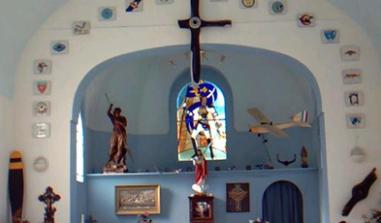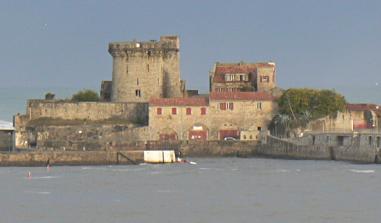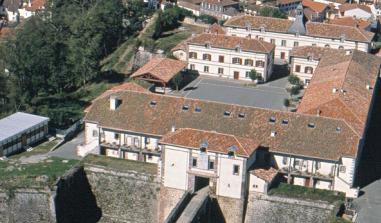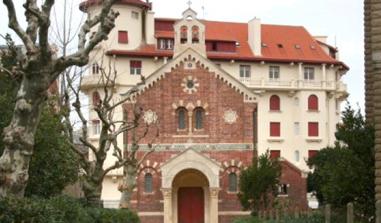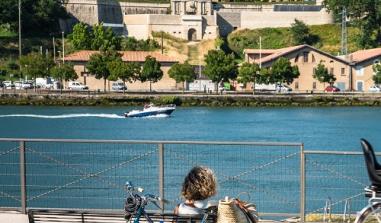Paratroopers Museum
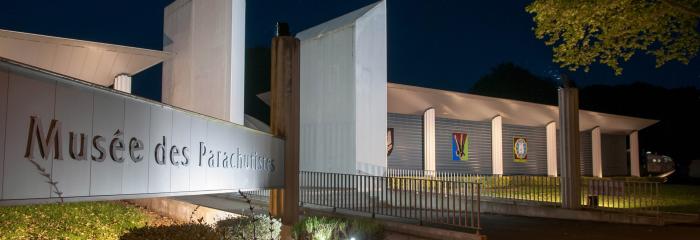
Une des salles du Musée des Parachutistes - © Jean Louis Laporte
The Musée des Parachutistes charts the history of the French paratroopers, from their origins to the present day. Exhibition “The French paras in the Liberation”
It is both a traditional museum of the French army and a representative collection of the past and present of the French airborne units. Guardian of the identity of all airborne troops, its goal is to present their history, traditions, spirit and current developments.
Its collections and displays comprising many lifelike scenes are accessible to all and are of interest to both the public and the troops themselves. Temporary exhibitions make it a regional centre for disseminating the spirit of defence. The museum is thus intended as a place where the memory of contemporary conflicts can be studied and passed on, with a variety of information sources available to teachers, university students and visitors.
The museum charts the history of the French paratroopers, from their origins to the present. The exhibition comprises five displays preceded by explanatory videos.
Each display consists of scenes containing mannequins in full battle dress, weaponry and vehicles, against a poster backdrop:
- The period of the pioneers, the emergence of parachute technology and the use of parachutists: First World War balloonists, the first specific equipment, German, Soviet and French parachutists. The creation of the French airborne troops dates back to 1 April 1937, when two Air Infantry Groups (GIAs) were set up: the 601st GIA in Reims and the 602nd GIA in Baraki (Algeria). Their doctrine and inspiration were Soviet, brought back by Colonel Geille from his training visit to the USSR and based on what was learned from the large-scale manoeuvres in Kiev in 1935.
- The Second World War and the creation of the major British and American units: French soldiers of the Free French Forces (FFL) in the Special Air Service (SAS) and in North Africa, equipped by the Americans. In 1940, an air infantry company was founded within the Free French Air Force, which would be incorporated in the Special Air Service as the “French Squadron”. The 3rd and 4th SAS were subsequently formed from escapees from France and the remnants of General Giraud’s army, which would go on to become the 3rd and 4th Chasseurs Parachute Regiments (RCP). They were dropped over Brittany on the eve of the D-Day landings, tasked with destroying a series of targets with the aim of stalling the enemy on the Breton peninsula. The 1st RCP, entirely equipped by the Americans, formed part of the US 82nd Airborne Division, before being deployed in the Vosges in 1944. The Shock Battalion, trained in jumping by the Americans and in combat by the British, was deployed in the liberation of Corsica and the island of Elba, then in metropolitan France. The African Commandos, the Shock Battalion’s sister regiment, specialising in amphibious operations and carrying heavier equipment, followed the 1st Army right up until the armistice. The Commandos of France, founded in 1944, joined the fighting with the 1st Army.
- The First Indochina War, a period in which the legend of the French paras was born and the major French units, variously equipped, were founded.
- The Algerian War, urban guerrilla warfare and helicopter transport over the vast desert. The collections stress the wide variety of uniforms and equipment used.
- The contemporary world, overseas operations and peacekeeping (Bizerte, Kolwezi, etc.). The exhibition presents the technical know-how and current equipment used by the units, by means of illustrations and videos (Special Forces, frogmen, equipment drops, demining, the Gendarmerie Nationale Task Force (GIGN), etc.), and stresses the key role of the École des Troupes Aéroportées (ETAP).
The museum’s collections are enriched by a permanent exhibition of works by army artists, including Brayer, Le Zachmeur, Sollier and Rosenberg. - The museum has a study room open to researchers; documents must be consulted on site.
Founded in February 2013, the Society of Friends of the Musée des Parachutistes (SAMParas) is officially recognised as the museum’s only support organisation. Since 16 July 2018, it has been a registered charity and can therefore issue tax receipts.
Its object is to contribute to the preservation, development and promotion of the historic and cultural heritage of the Musée des Parachutistes. It is in charge of collecting material and financial donations and taking museum tours.
Thanks to its volunteers, the museum is open 360 days a year and visitors have enthusiastic guides to take them round.
For further information or if you would like to make a donation, please phone SAMParas on +33 (0)5 59 40 49 19 or email them at samparas@orange.fr
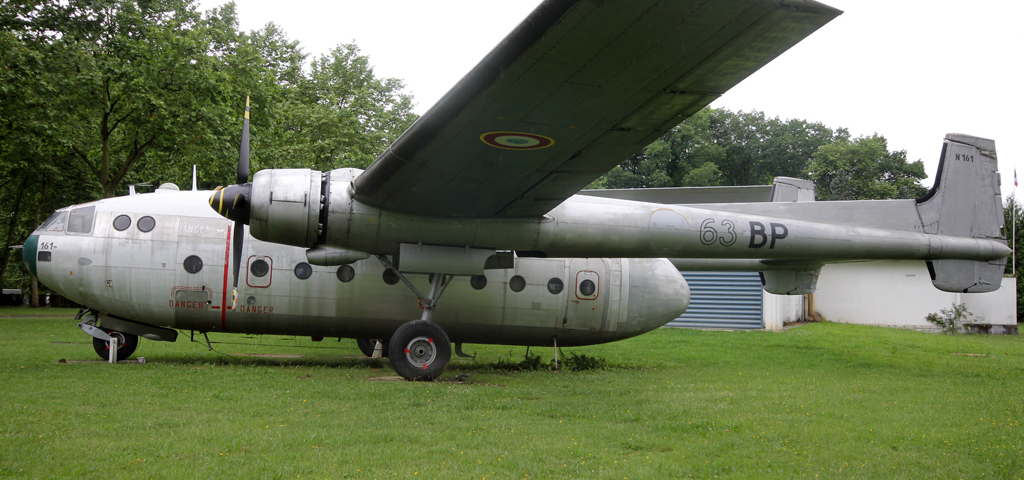
Noratlas at the entrance to the museum. Source: www.museedesparachutistes.com
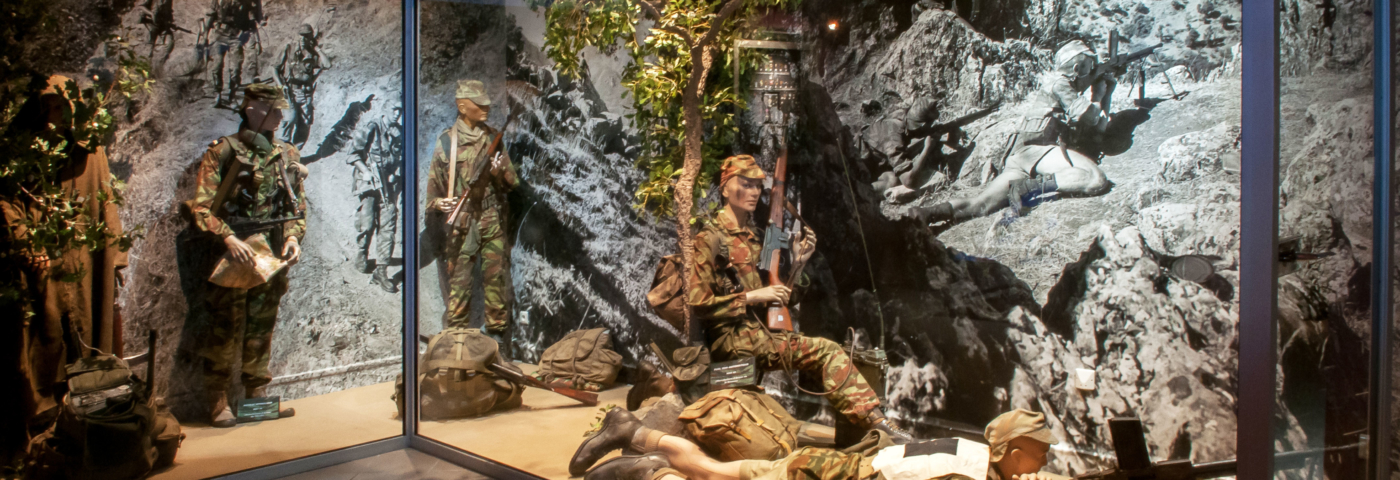
Scene from the Algerian War. Source: www.museedesparachutistes.com
Practical information
64000
Pau
05 59 40 49 19
Admission The museum is free to everyone, but visitors are encouraged to make a donation. Weekly opening hours *** Booking required for group visits (minimum 10 people). Special sessions tailored to the school curriculum are available. The museum supports educational projects and offers free activity sheets to teachers. Rooms are available to professionals for events or activities. Getting there: - The museum is at the entrance to the École des Troupes Aéroportées, on Chemin d’Astra, just off the main Bordeaux road (N134). Follow the arrows from the A64 exit “Pau-Centre”. - The museum has parking for cars and coaches. - The building has disabled access. *** Website: www.museedesparachutistes.com Email: musee.parachutistes@gmail.com
Weekly opening hours The museum is open daily, from 2 pm to 5 pm. Group visits can be booked in the mornings, 9 am to 12 noon. The last visitors are recommended to arrive one hour before closing.
Annual closing 1 January, 1 May, 1 November and 25 December


